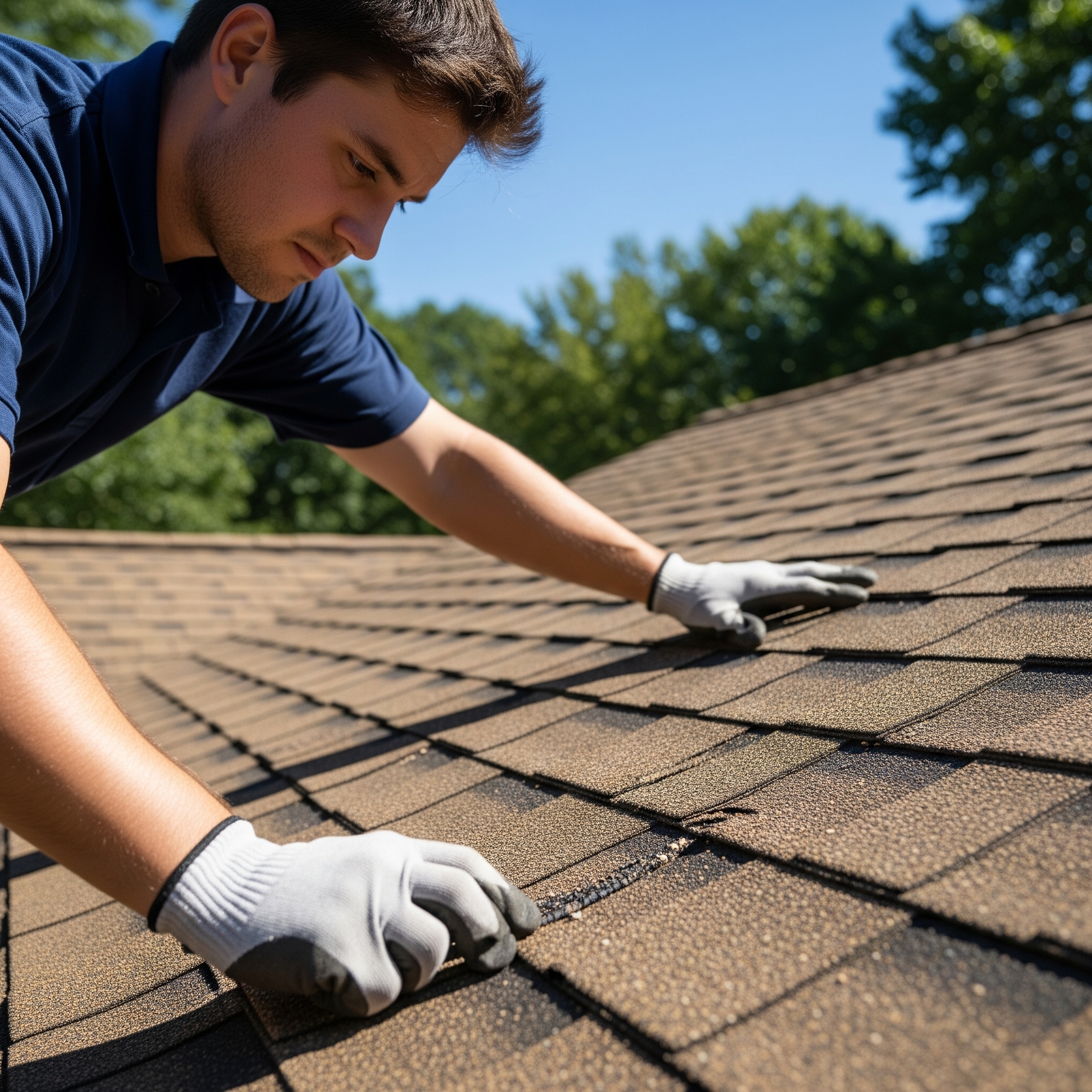Your roof is your home’s first line of defense against the elements, protecting you and your family from rain, wind, snow, and heat. Because it is constantly exposed to harsh weather, roofs can develop damage over time that may not be immediately visible. Catching roof damage early can save you thousands in costly repairs or premature roof replacement.
At American Roofing Pros New Jersey, we recommend regular inspections and knowing the signs of roof damage. In this guide, we will help you understand how to spot roof damage early so you can act promptly and protect your home.
📞 Call (877) 228-1042 for a professional roof inspection
🔗 Request a free roof quote here
1. Look for Missing or Damaged Shingles
Shingles protect your roof from water penetration. Missing, cracked, curled, or blistered shingles are a clear sign your roof needs attention. Inspect your roof after storms or high winds, paying special attention to areas with visible wear.
2. Check for Granule Loss
Asphalt shingles are coated with granules to protect them from UV rays and weather. Finding granules in your gutters or downspouts is a sign your shingles are deteriorating. Excessive granule loss shortens your roof’s lifespan and increases leak risk.
3. Inspect the Attic for Water Damage
Go into your attic and check for signs of leaks such as water stains, mold, mildew, or damp insulation. Look for daylight coming through the roof boards. An unhealthy attic environment may indicate your roof is compromised.
4. Notice Interior Water Stains or Mold
Water stains on ceilings or walls, especially after heavy rain, often point to roof leaks. Mold or a musty smell inside your home can also indicate water intrusion. These signs require immediate professional evaluation.
5. Examine Flashing and Seals Around Roof Penetrations
Areas around chimneys, vents, skylights, and pipes are vulnerable to leaks if the flashing is damaged or improperly sealed. Check for cracks, rust, or separation in these areas.
6. Watch for Sagging or Uneven Roof Decking
A sagging roof or soft spots when you walk on it indicate structural issues. This can be caused by prolonged water damage weakening the roof decking or supports.
7. Look for Moss, Algae, or Lichen Growth
While common in humid areas, moss and algae can trap moisture against your shingles, leading to decay. Large patches of growth should be removed to prevent damage.
8. Check Gutters for Debris or Excessive Granules
Regularly inspect gutters for shingle granules, leaves, or other debris. This buildup can cause water backup and damage your roof edges.
9. Listen for Roof Noise During Rain or Wind
New or increased noise during storms can be a sign of loose or damaged shingles or underlying structural problems.
10. Hire a Professional for Regular Inspections
While homeowners can do basic checks, professional roofing contractors have the experience and tools to find hidden damage. We recommend at least two inspections per year, especially after major storms.
Why Early Detection Matters
Early detection of roof damage allows for timely repairs, which can:
-
Prevent leaks and interior water damage
-
Extend the life of your roof
-
Maintain your home’s value
-
Save money on expensive replacements
Trust American Roofing Pros New Jersey
We offer thorough roof inspections, honest assessments, and expert repairs throughout New Jersey. If you suspect roof damage or just want peace of mind, contact us today.
